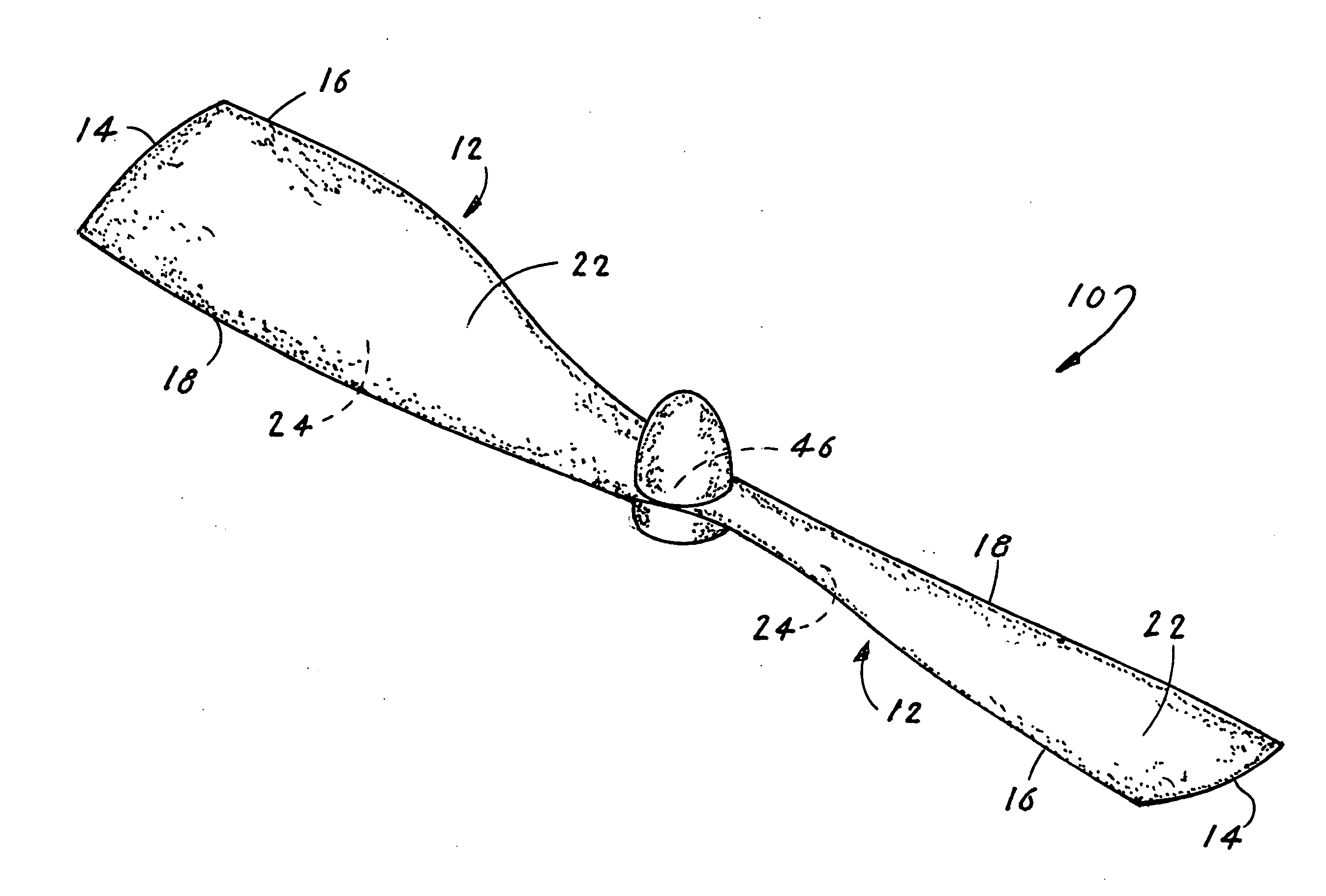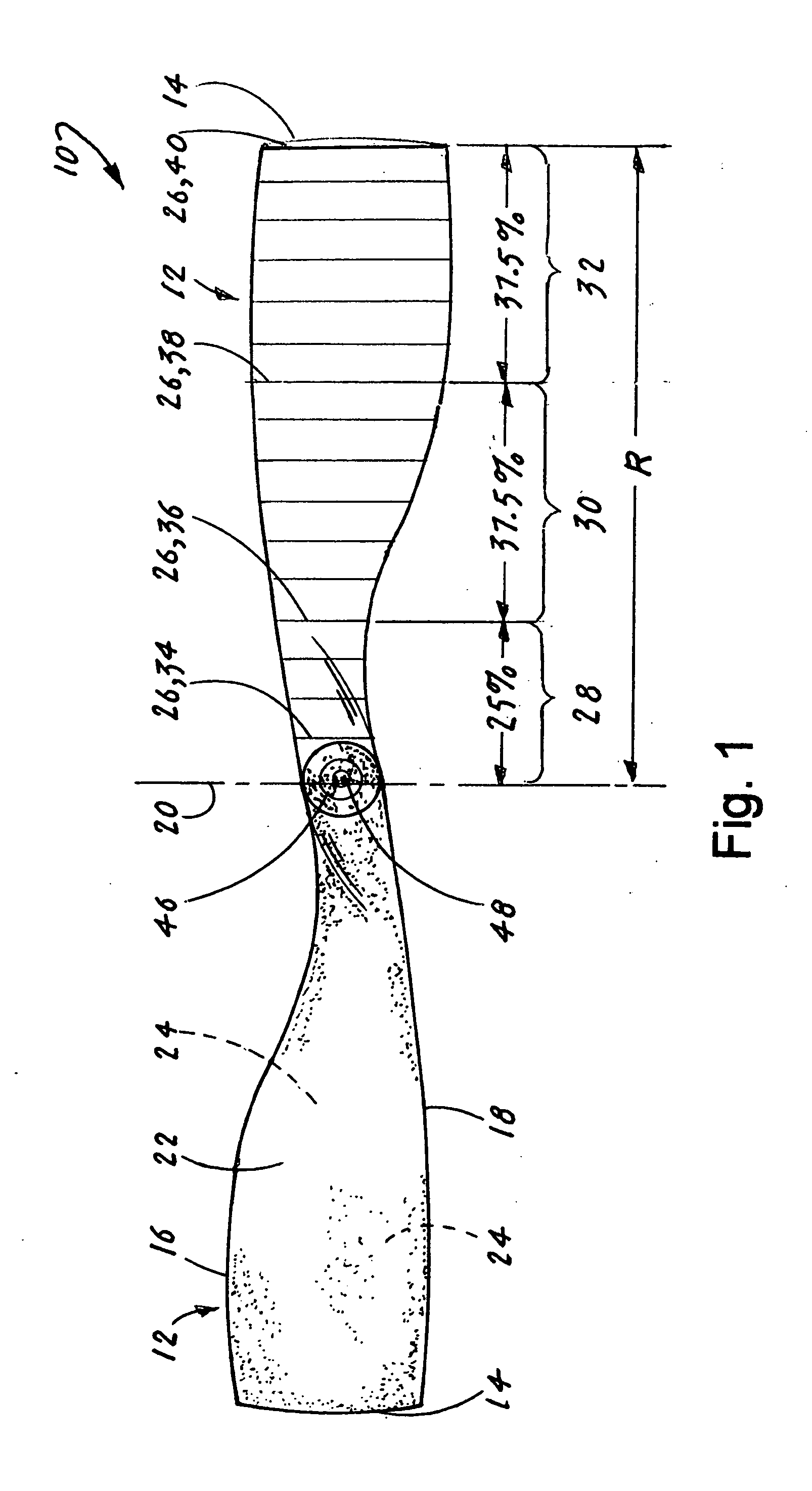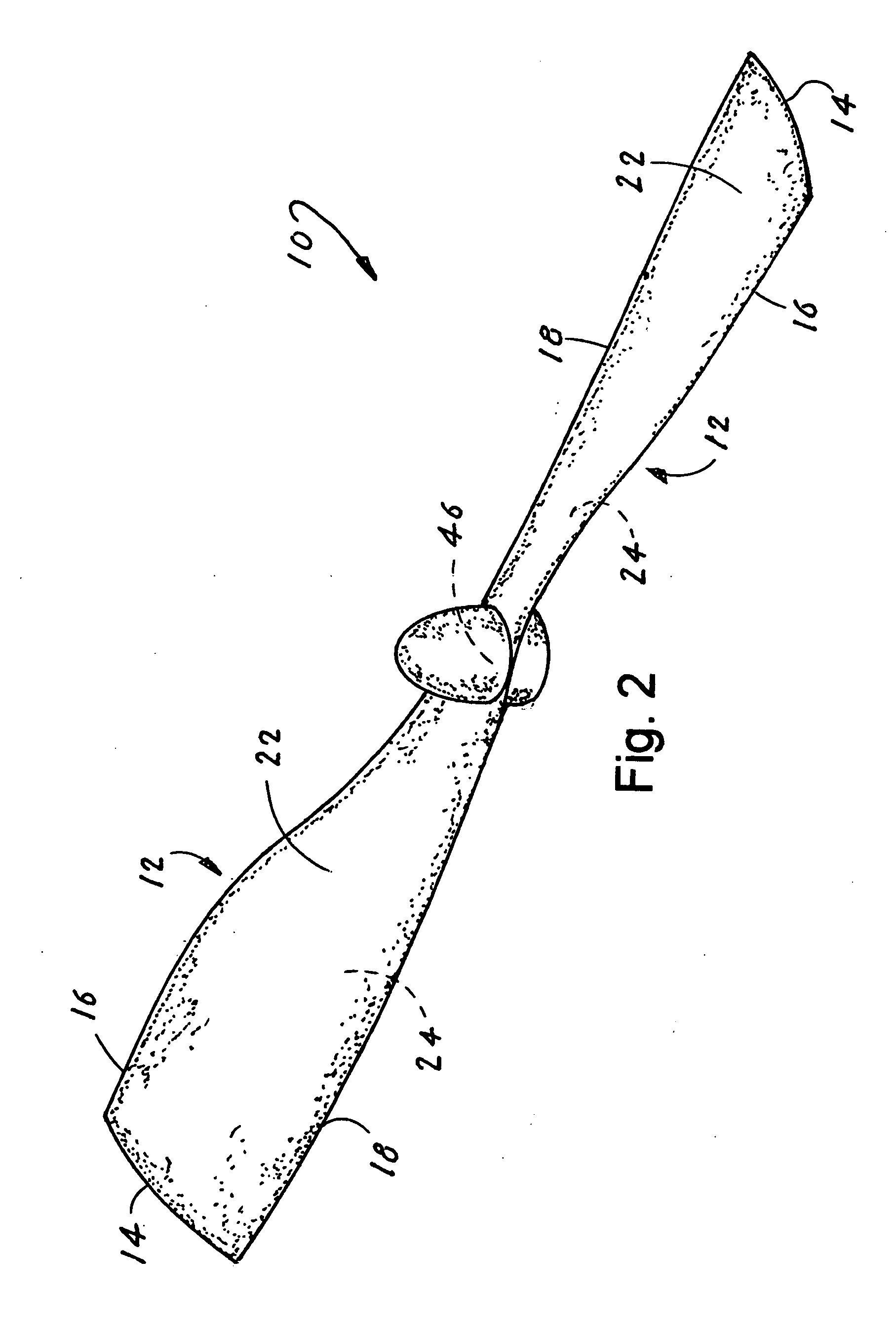Horizontal axis wind turbine (HAWT)
a horizontal axis, wind turbine technology, applied in wind motors, reaction engines, motors, etc., can solve the problems of reducing and patents that do not address the wind turbines' wind capture or low wind velocity operation. , to achieve the effect of reducing the diameter of the blade, reducing the cost of operation, and increasing the efficiency of wind turbines
Inactive Publication Date: 2011-03-03
KHAN SARBULAND
View PDF20 Cites 9 Cited by
- Summary
- Abstract
- Description
- Claims
- Application Information
AI Technical Summary
Benefits of technology
[0016]The invention discloses a stall-regulated turbine that does not require costly pitching devices. The blade also features a design that provides improved wind capture and therefore can operate at low wind speeds with high performance.
[0027]2. the precise designs of the airfoil profiles to provide superior lift to drag ratios,
Problems solved by technology
Furthermore, windmill blades typically have a very high aspect ratio and taper to the tip, a combination that leads to significantly reduced wind capture.
Typically, blade diameters of 15 to 20 feet (4.6 to 6.1 meters) are required to power an average home, thus making it difficult to install a windmill in residential areas, particularly due to strict city ordinances that limit the maximum wind turbine diameter within home installations.
The patent does not address the blade's wind capture or low wind velocity operation.
The blunt trailing edge would create significant drag when rotating at high speeds.
A rounded trailing edge on a high velocity blade will create substantial drag.
Additionally, none of the patents address the problem of wind capture by the blades or tip drag.
Method used
the structure of the environmentally friendly knitted fabric provided by the present invention; figure 2 Flow chart of the yarn wrapping machine for environmentally friendly knitted fabrics and storage devices; image 3 Is the parameter map of the yarn covering machine
View moreImage
Smart Image Click on the blue labels to locate them in the text.
Smart ImageViewing Examples
Examples
Experimental program
Comparison scheme
Effect test
second embodiment
[0059]In a second embodiment, family C profiles, an example of which is shown in FIG. 13, is used to replace profiles, at least in one section of the blade.
third embodiment
[0060]In a third embodiment, family D profiles, an example of which is shown in FIG. 14, is used to replace profiles, at least in one section of the blade.
the structure of the environmentally friendly knitted fabric provided by the present invention; figure 2 Flow chart of the yarn wrapping machine for environmentally friendly knitted fabrics and storage devices; image 3 Is the parameter map of the yarn covering machine
Login to View More PUM
 Login to View More
Login to View More Abstract
A horizontal axis wind turbine (HAWT 10) that preferably consists of at least two blades 12. The HAWT (10) is designed to operate against wind speeds ranging from 5 mph to 35 mph (2.2 m / s to 15.65 m / s) and with a blade diameter of at least 3 feet (0.91 meters). Each blade 12 is divided sequentially and longitudinally into a root section (28) that extends from the blade center line (20), an inboard section (30) and an outboard section (32) that terminates at the tip of the blade (12).
Description
TECHNICAL FIELD[0001]The invention generally pertains to the field of wind turbines and more particularly to a to horizontal axis wind turbine (HAWT).BACKGROUND ART[0002]A study of contemporary windmill blades indicates that the design of most blades is based on aircraft wings having a twist. The cross-sectional designs of the windmill blades closely resemble that of aircraft wings, with some blades simply reversed in one plane, thereby resulting in a greater camber on the lower surface of the airfoil profile rather than on the upper surface as with aircraft wings and propellers. Furthermore, windmill blades typically have a very high aspect ratio and taper to the tip, a combination that leads to significantly reduced wind capture. Typically, blade diameters of 15 to 20 feet (4.6 to 6.1 meters) are required to power an average home, thus making it difficult to install a windmill in residential areas, particularly due to strict city ordinances that limit the maximum wind turbine diam...
Claims
the structure of the environmentally friendly knitted fabric provided by the present invention; figure 2 Flow chart of the yarn wrapping machine for environmentally friendly knitted fabrics and storage devices; image 3 Is the parameter map of the yarn covering machine
Login to View More Application Information
Patent Timeline
 Login to View More
Login to View More Patent Type & Authority Applications(United States)
IPC IPC(8): F03D1/06
CPCF03D1/0608Y02E10/721F05B2240/301Y02E10/72
Inventor KHAN, SARBULAND
Owner KHAN SARBULAND
Features
- R&D
- Intellectual Property
- Life Sciences
- Materials
- Tech Scout
Why Patsnap Eureka
- Unparalleled Data Quality
- Higher Quality Content
- 60% Fewer Hallucinations
Social media
Patsnap Eureka Blog
Learn More Browse by: Latest US Patents, China's latest patents, Technical Efficacy Thesaurus, Application Domain, Technology Topic, Popular Technical Reports.
© 2025 PatSnap. All rights reserved.Legal|Privacy policy|Modern Slavery Act Transparency Statement|Sitemap|About US| Contact US: help@patsnap.com



